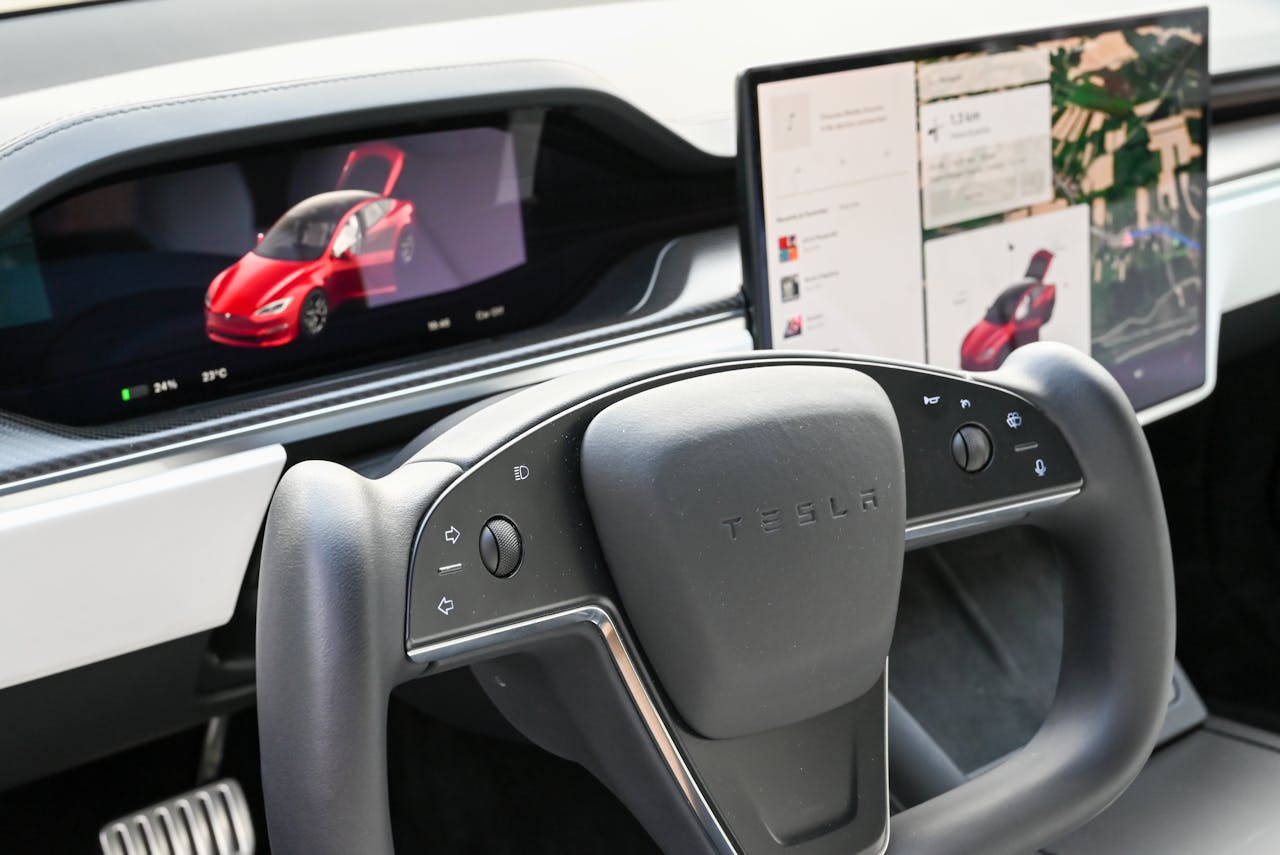Autonomous EVs 2025: Tesla, BYD, VW Smart Features & Innovations
As the automotive world accelerates toward a future dominated by electric vehicles (EVs), autonomous driving features are taking center stage. In 2025, industry leaders like Tesla, BYD, and Volkswagen (VW) are set to redefine mobility with their cutting-edge smart features and innovations. According to BloombergNEF, the global market for autonomous EVs is expected to reach $60 billion by 2030, underscoring a seismic shift in how we perceive transportation. This article will explore the anticipated innovations from Tesla, BYD, and VW, offering a glimpse into the future of driving and what these advancements mean for consumers.
Tesla’s Autonomous Driving Innovations
Autopilot and Full Self-Driving (FSD) Capabilities
Tesla remains at the forefront of autonomous technology with its Autopilot and Full Self-Driving (FSD) capabilities. By 2025, Tesla aims to enhance its FSD features to allow for complete autonomy in urban environments. The system uses advanced neural networks and a suite of sensors to navigate complex traffic scenarios. As of 2023, Tesla vehicles equipped with FSD Beta have demonstrated impressive capabilities, though regulatory approval for full autonomy remains pending.
Key Features Expected by 2025:
- Enhanced Navigate on Autopilot: Improved lane changing and highway merging.
- City Streets Autonomy: Ability to handle intersections, traffic lights, and roundabouts.
- AI-Driven Learning: Continuous updates and improvements through machine learning.
Tesla’s commitment to over-the-air (OTA) updates ensures that drivers experience the latest advancements without the need for new hardware installations.
BYD’s Leap into Autonomous Mobility
BYD’s AI-Driven Innovations
BYD, China’s largest EV manufacturer, is making significant strides in autonomous technology. Known for its cost-effective yet high-performance electric cars, BYD is integrating artificial intelligence to enhance driving safety and convenience. By 2025, BYD plans to offer semi-autonomous features across its lineup, focusing on urban mobility.
Upcoming Features:
- Intelligent Driving Assistance: Enhanced adaptive cruise control and lane-keeping assist.
- AI-Powered Safety Systems: Real-time hazard detection and collision avoidance.
- Smart City Integration: Seamless connectivity with urban infrastructure for improved navigation and efficiency.
BYD’s focus on affordable autonomy allows consumers to enjoy cutting-edge safety features without a premium price tag.
Volkswagen’s Vision for Autonomous EVs
ID Series and Autonomous Driving
Volkswagen’s ID series represents its commitment to sustainable and autonomous driving. By 2025, VW aims to blend its electric platform with Level 4 autonomous capabilities, particularly in its ID. Buzz, a modern take on the classic Microbus, and other ID models.
Notable Innovations:
- Trained Parking: Automated parking in designated areas.
- Car-to-X Communication: Interaction with other vehicles and infrastructure for optimized traffic management.
- Innovative Interior Design: Configurable cabins for a personalized experience during autonomous travel.
Volkswagen’s strategic partnerships with tech firms aim to accelerate its autonomous vehicle technology, promising a seamless and intuitive driving experience.
Practical Considerations for Autonomous EV Buyers
How to Choose Your First Autonomous Electric Car
When selecting an autonomous EV, consider these factors:
- Autonomy Level: Understand the autonomous capabilities offered, from driver assistance to full autonomy.
- Range and Charging: Evaluate the vehicle’s electric range and charging options (e.g., fast charging capabilities).
- Price and Features: Compare pricing and available features, such as AI-driven safety systems.
- Brand Reputation: Consider the manufacturer’s track record in both EVs and autonomous technology.
Best EVs of the Year
- Tesla Model 3: Known for its advanced FSD capabilities and extensive range.
- BYD Tang EV: Offers a robust set of semi-autonomous features at an affordable price.
- VW ID.4: Combines electric efficiency with emerging autonomous technologies.
Charging Guide for Beginners
Navigating the world of EV charging can be daunting for newcomers. Here’s a simplified guide:
- Home Charging: Install a Level 2 charger for overnight charging.
- Public Charging: Utilize fast chargers for quick top-ups during travel.
- Charging Networks: Familiarize yourself with networks like Tesla Supercharger, Electrify America, and ChargePoint.
Engaging Conclusion
In conclusion, the journey toward autonomous EVs in 2025 promises unprecedented convenience, safety, and sustainability. Tesla, BYD, and VW are at the cutting edge, each offering unique innovations that will shape the future of mobility. As consumers, staying informed about these advancements allows us to make the best choices when transitioning to autonomous electric vehicles. Are you ready to embrace the future of driving? Keep an eye on industry updates to ensure you’re at the forefront of this technological revolution.
The autonomous EV landscape is poised for rapid evolution, with 2025 marking a significant milestone. As we edge closer to a world where cars drive themselves, the possibilities seem limitless. Stay connected with trusted sources like InsideEVs and Bloomberg Green for the latest insights and updates on this exciting journey.

